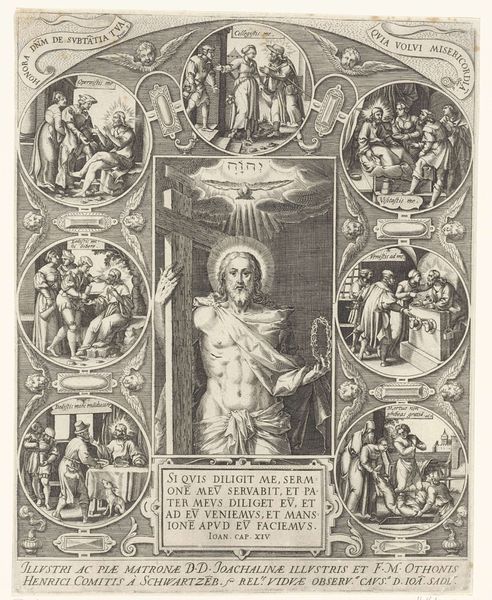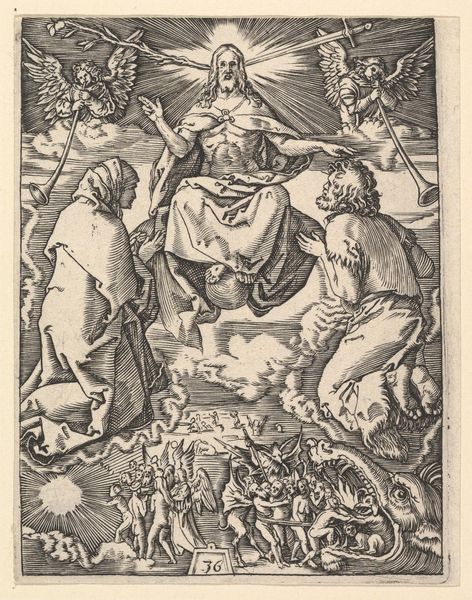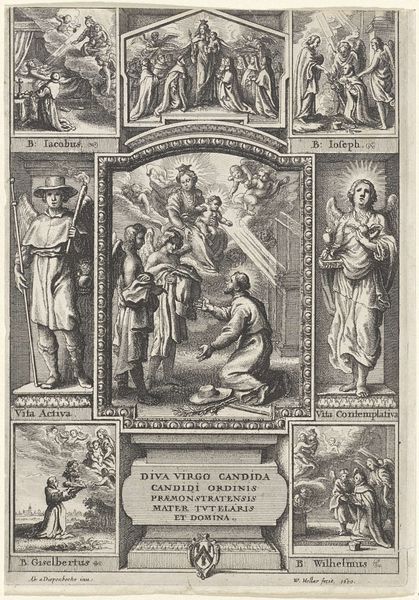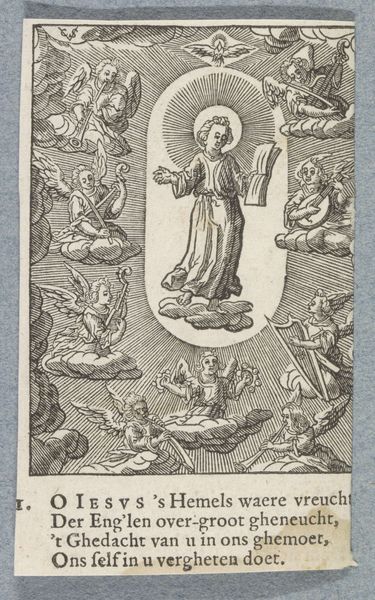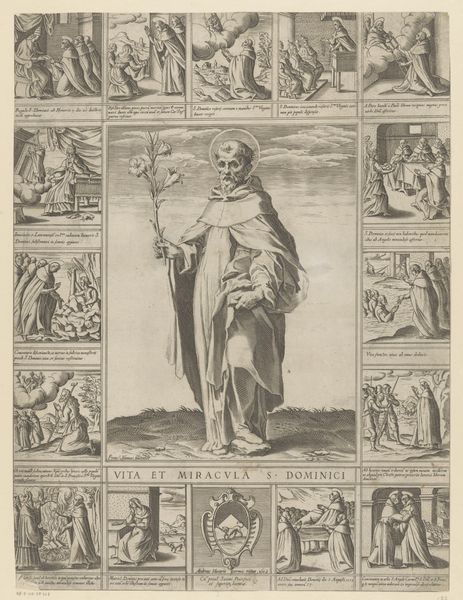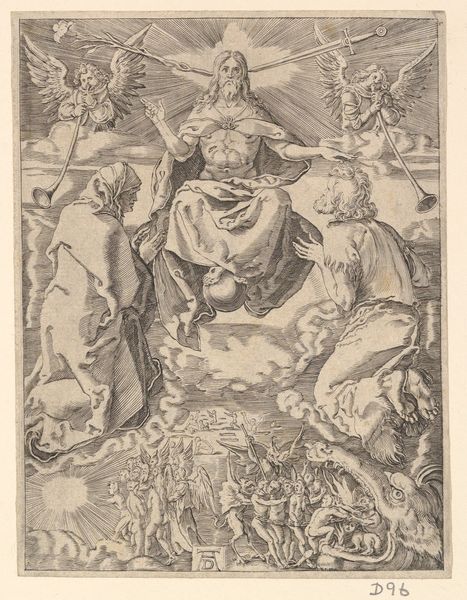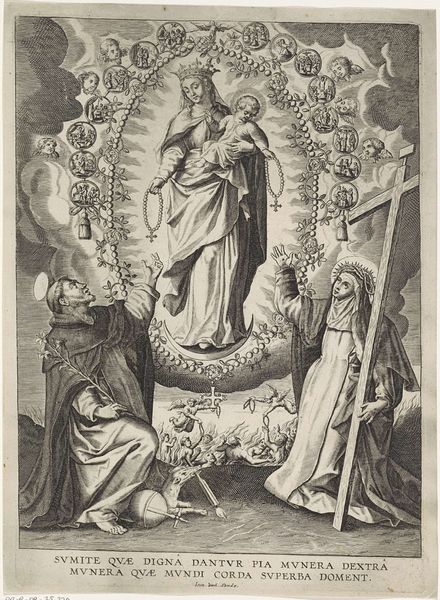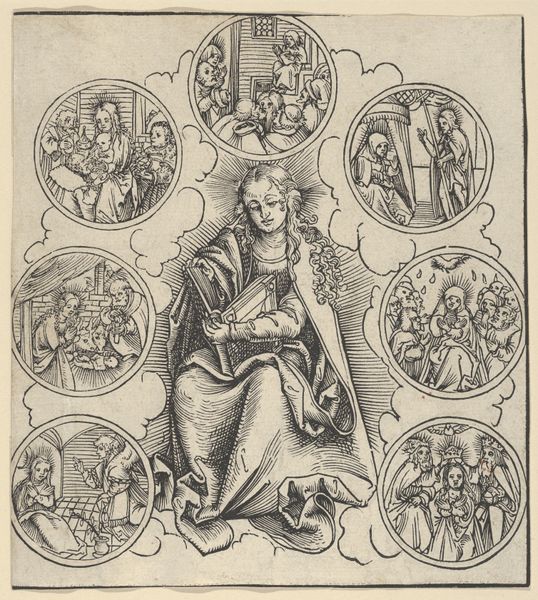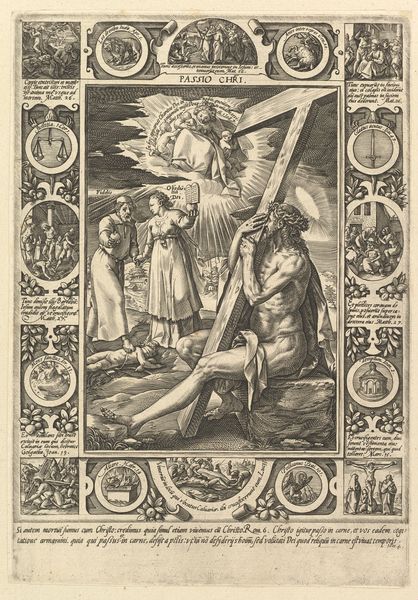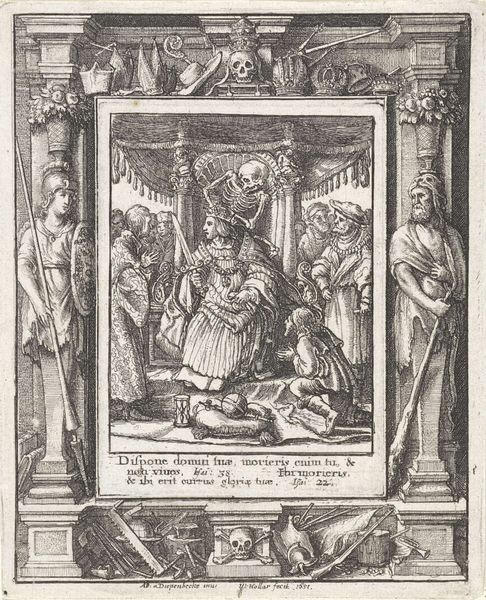
print, intaglio, engraving
#
narrative-art
# print
#
intaglio
#
old engraving style
#
figuration
#
pen-ink sketch
#
pen work
#
history-painting
#
northern-renaissance
#
engraving
Dimensions: height 136 mm, width 89 mm
Copyright: Rijks Museum: Open Domain
Curator: This is an engraving titled "Christus als Man van Smarten, te midden van scènes uit de passie" - Christ as Man of Sorrows, surrounded by scenes from the Passion - created between 1590 and 1638 by the Wierix family. It depicts a central, suffering Christ, surrounded by smaller scenes of his torture. Editor: The composition is really striking; almost architectural. The oval vignette of Christ anchors the work. Its mood is incredibly somber, a dark meditation on sacrifice. Curator: Indeed. The scenes around Christ – the Flagellation, the Crowning with Thorns, the Crucifixion - are like stations of the cross, small windows into the narrative of his suffering. Notice the inscription, "Ecce Homo" – "Behold the Man" - underscoring the idea of public display. It was likely part of a devotional series designed to evoke empathy. Editor: I'm particularly drawn to the symbolism here. The implements of torture surrounding Christ – the whips, the crown of thorns – aren't just historical details; they're powerful icons of pain and humiliation. Their arrangement makes one focus on Christ's acceptance, on a willingness to sacrifice all. Curator: And the Wierix family were masters of engraving, weren’t they? Their printmaking shaped the visual landscape of their era, making religious imagery accessible to a broad audience, solidifying a cultural vision of redemption, and offering a powerful narrative of the church, the State, and family, inextricably linked to the viewer's fate. Editor: Looking closer, it’s the artist's facility with the cross-hatching, a very precise pen work, which conveys the intense drama of the image that lingers in the mind, prompting further contemplation on suffering and redemption. Curator: Precisely, these devotional images played a role in shaping the spiritual lives of their viewers. It encouraged reflection, a way of making meaning by confronting life's sorrows, and the artwork gave comfort from it. Editor: Seeing how visual symbolism is capable of influencing broad audiences allows you to look into a different window of meaning for the art of this period. Curator: It is a perfect convergence, as these combined historical understanding and sensitivity, so allow for a deeper, multifaceted interpretation of art.
Comments
No comments
Be the first to comment and join the conversation on the ultimate creative platform.
